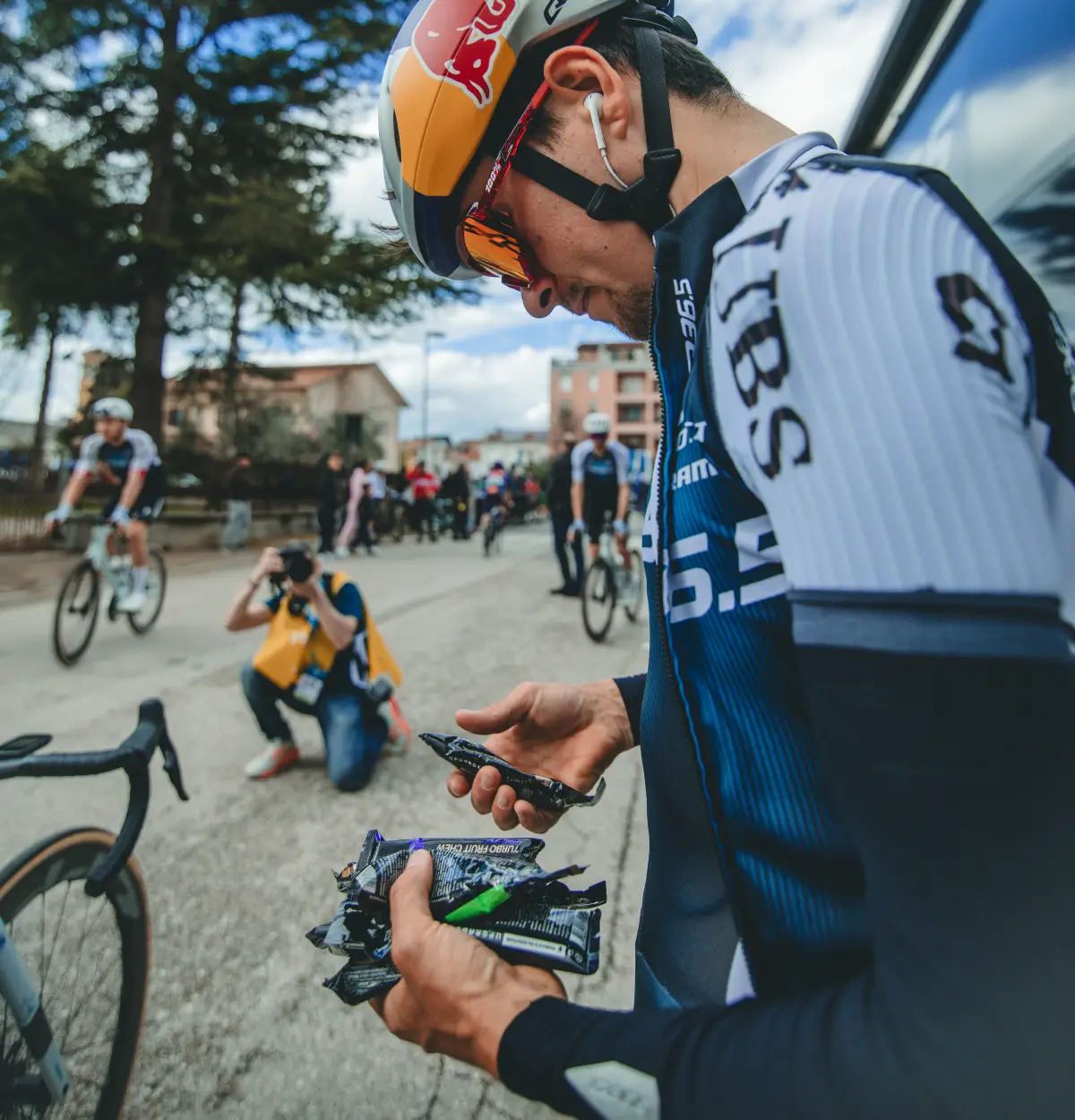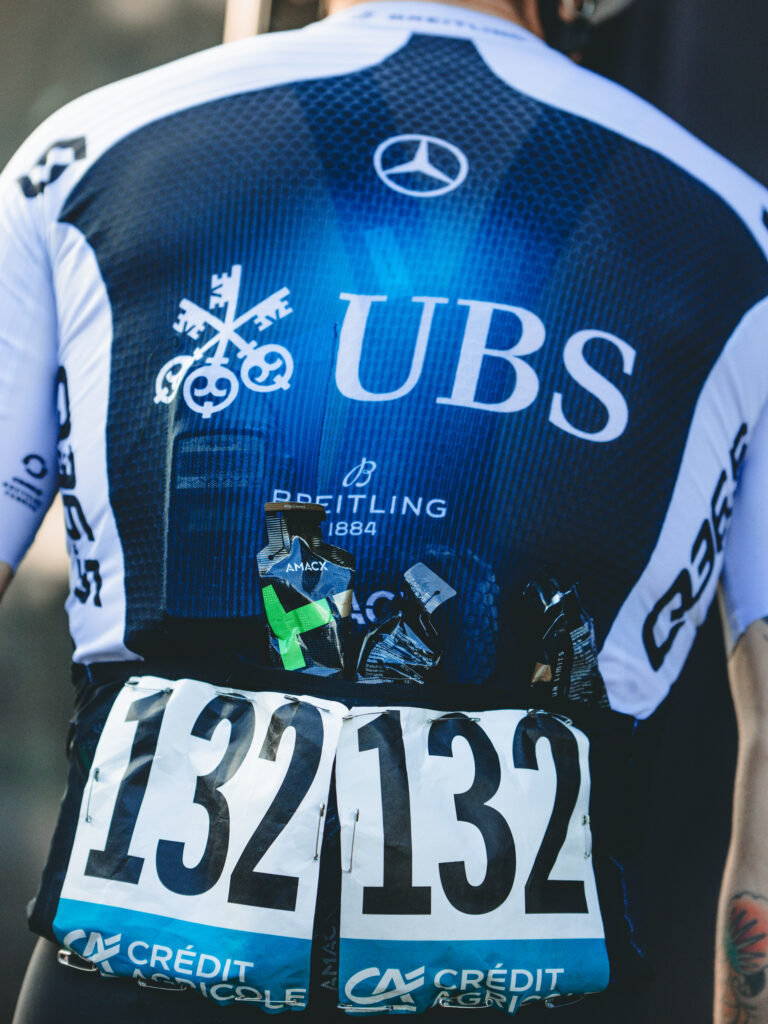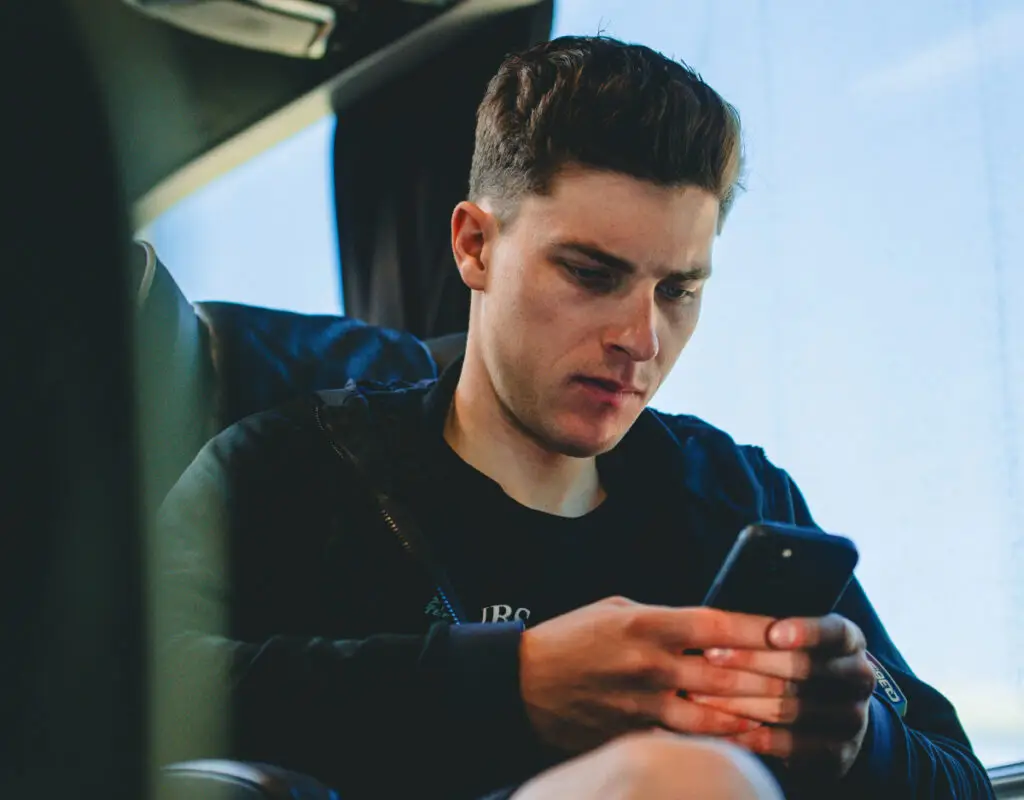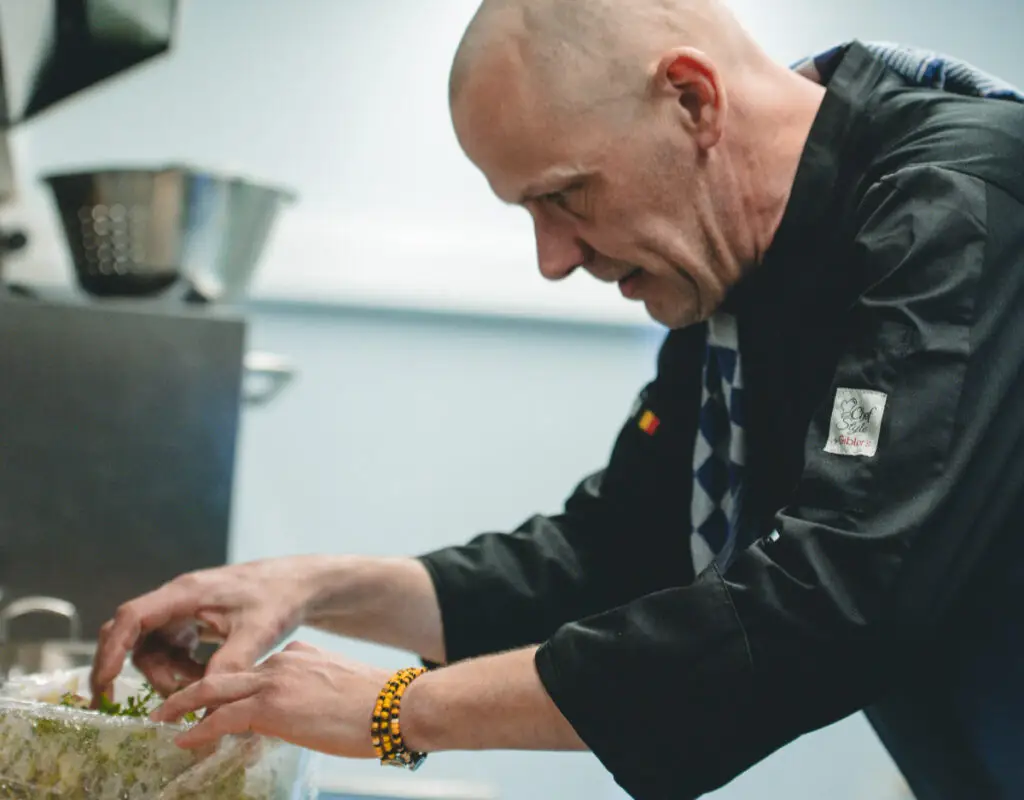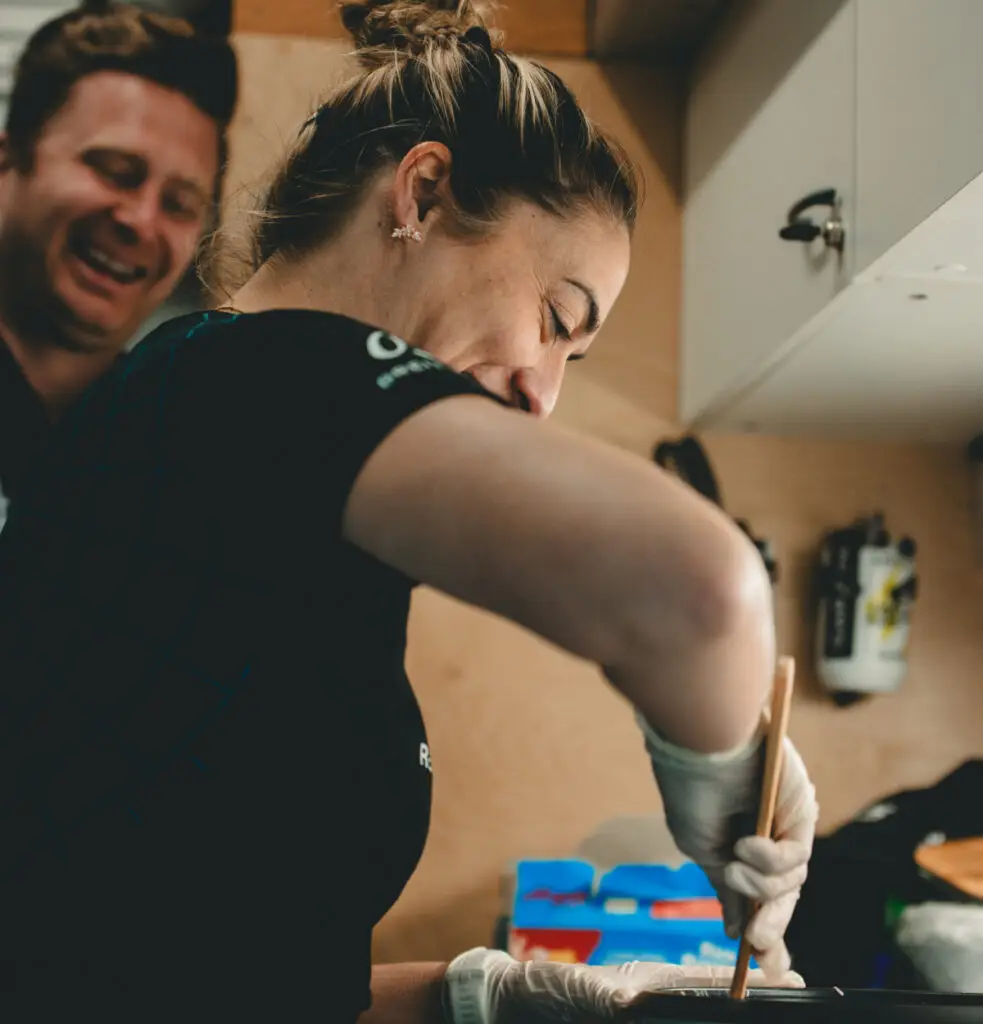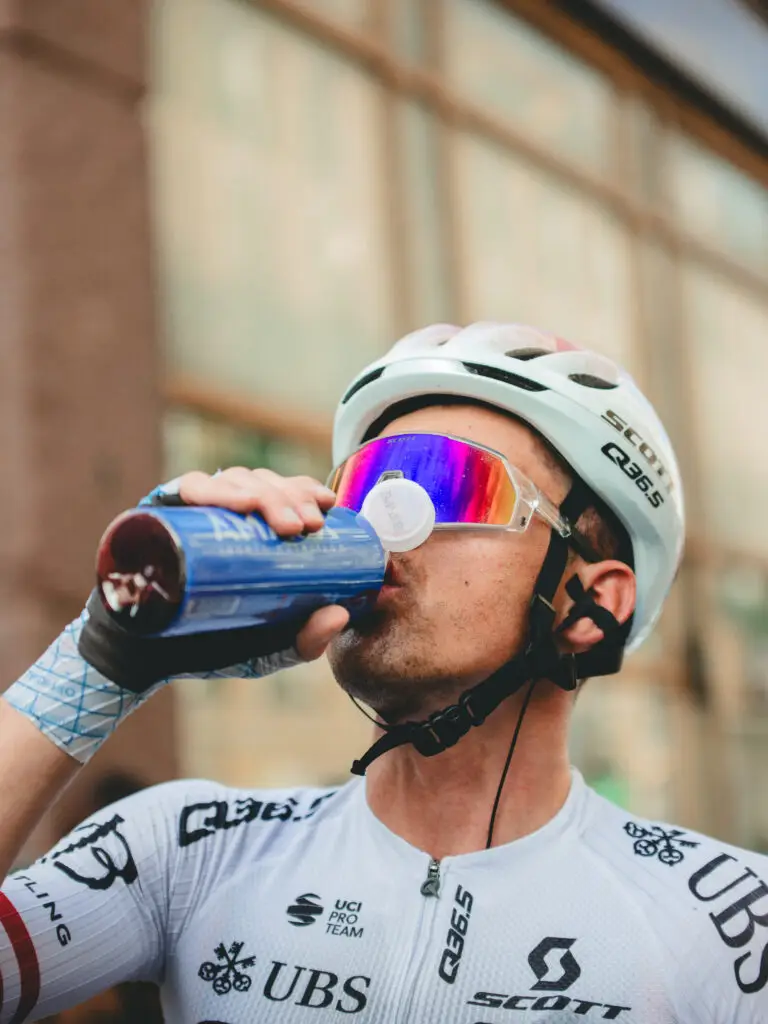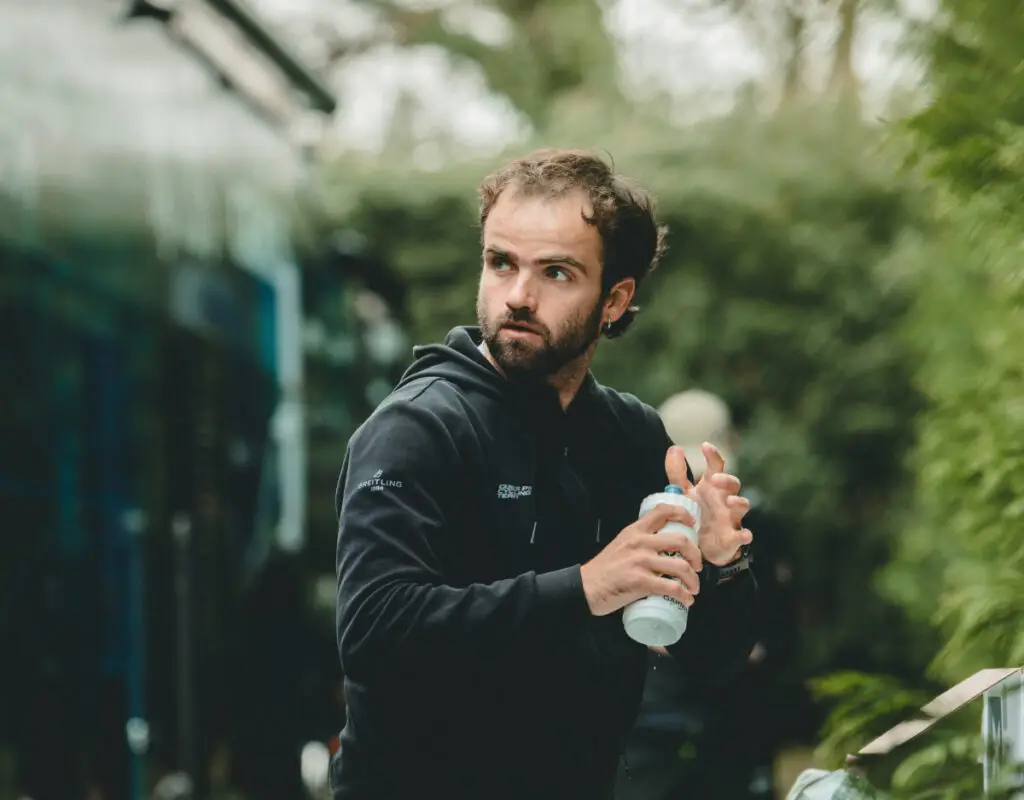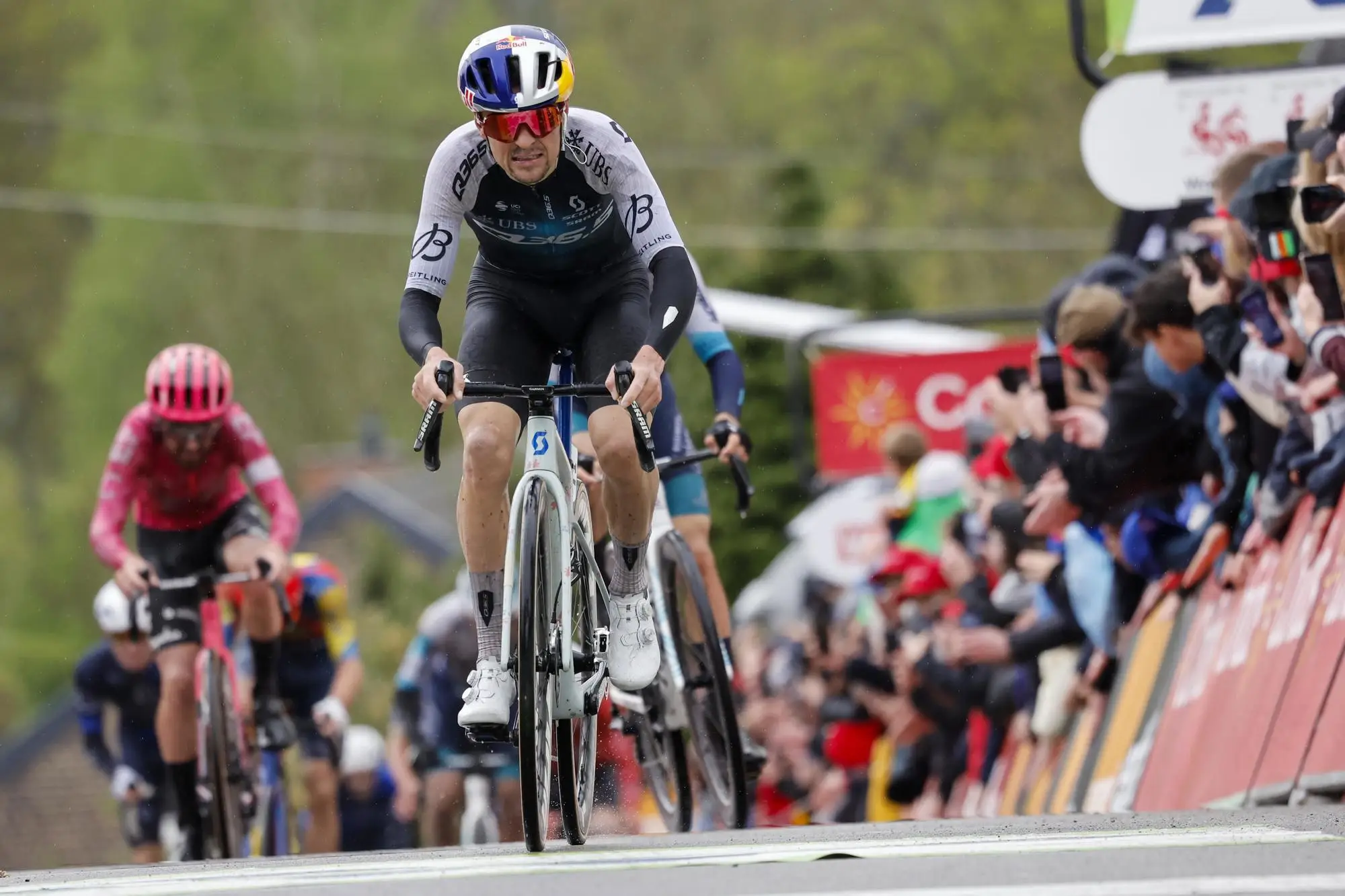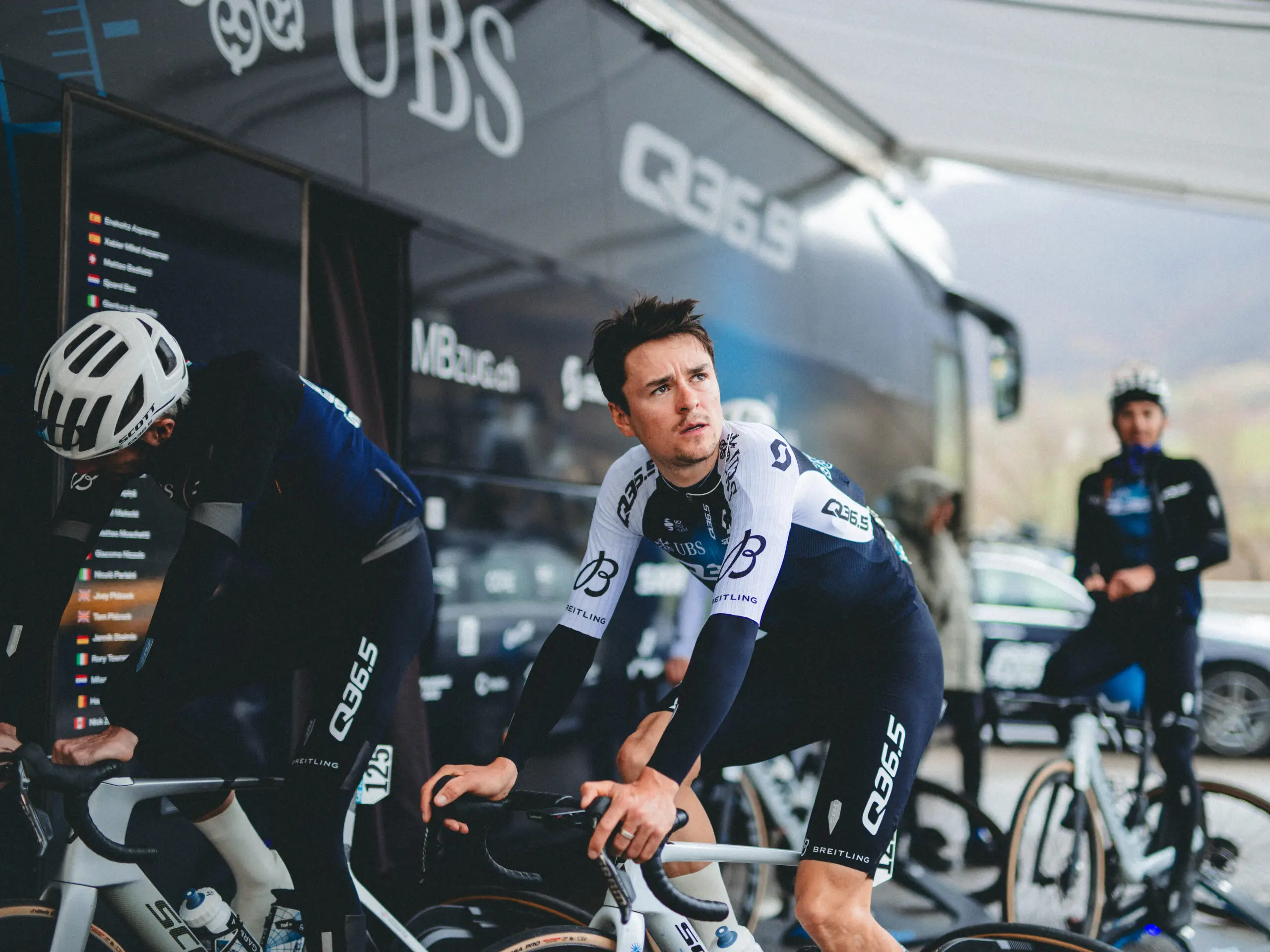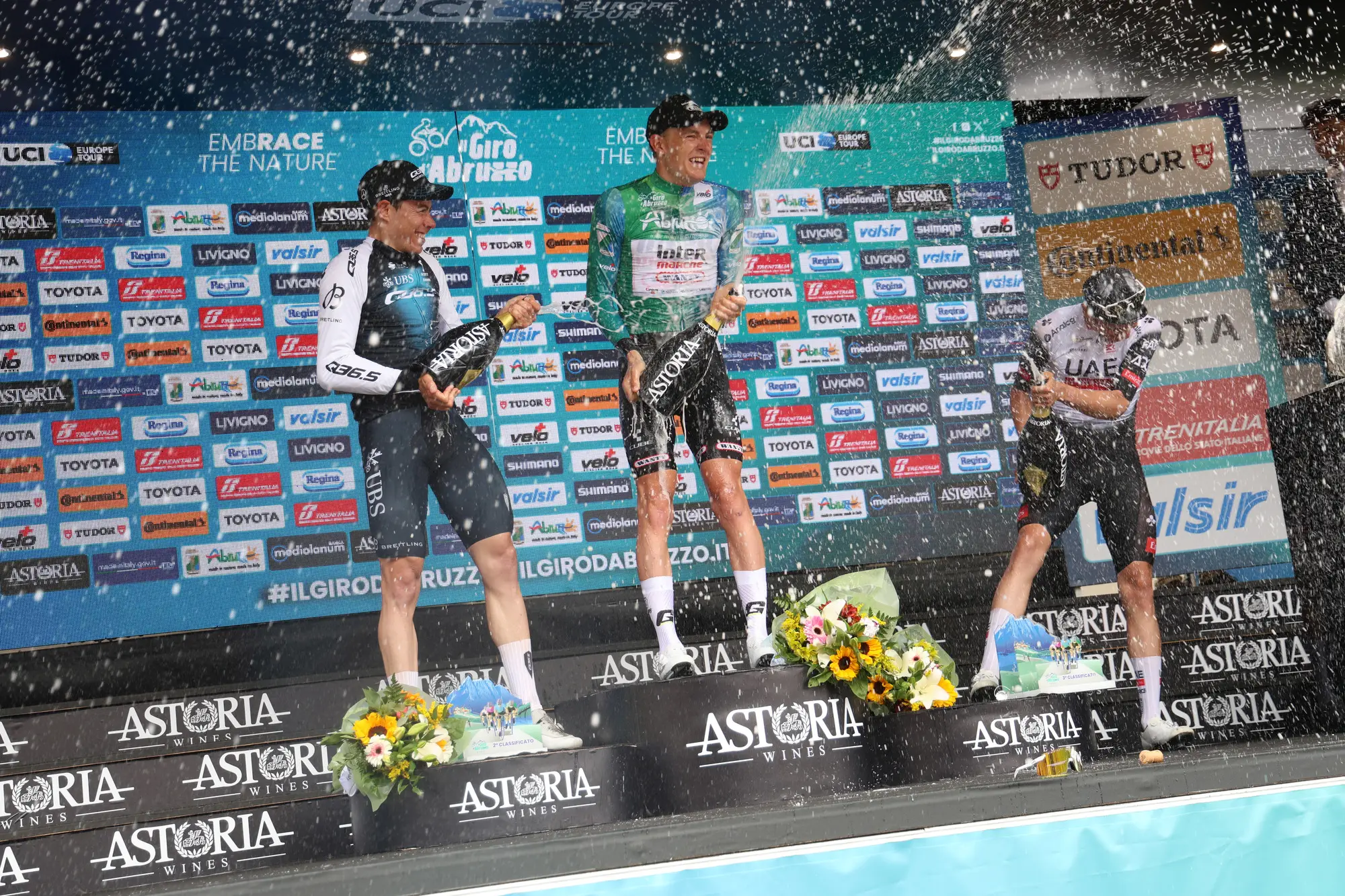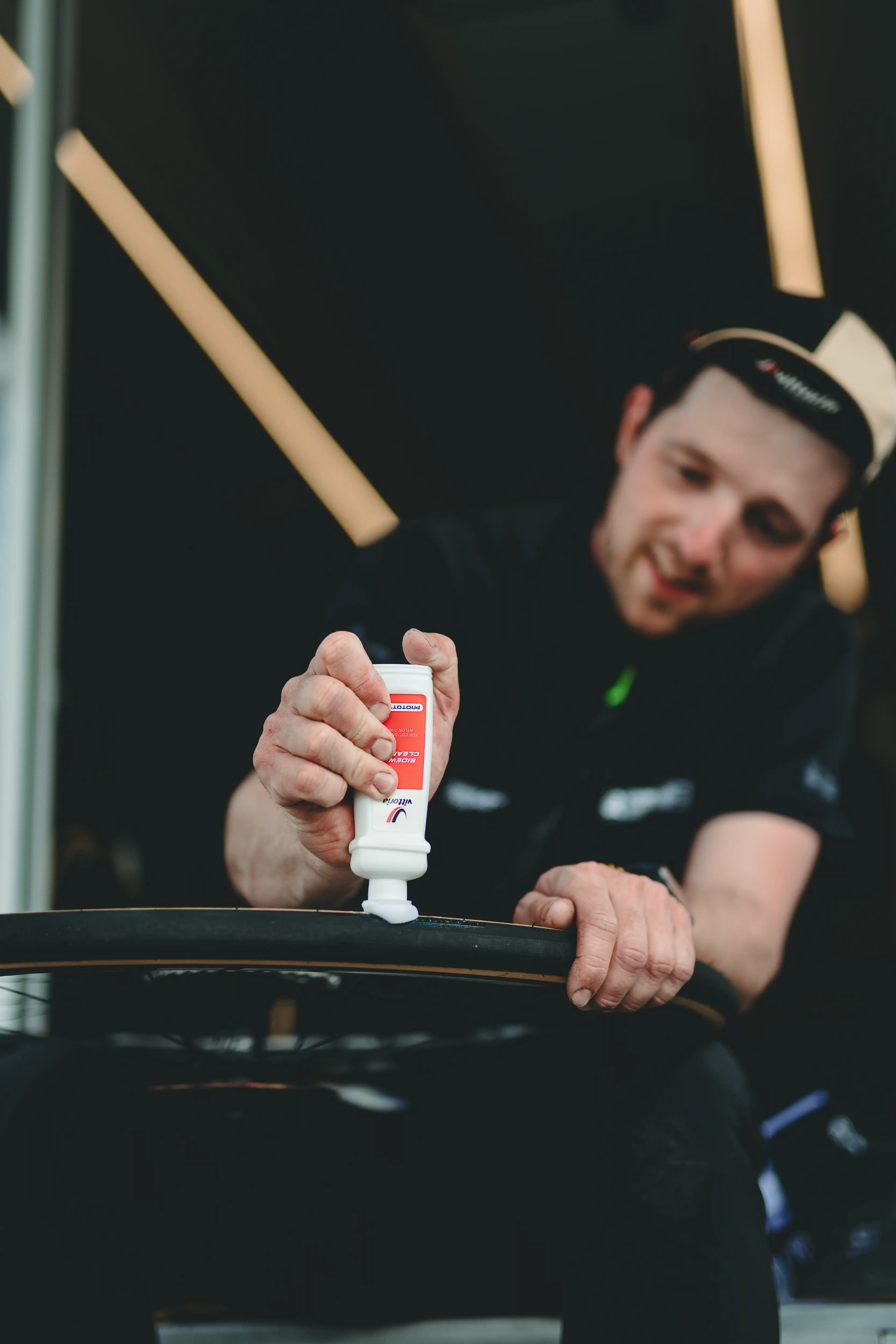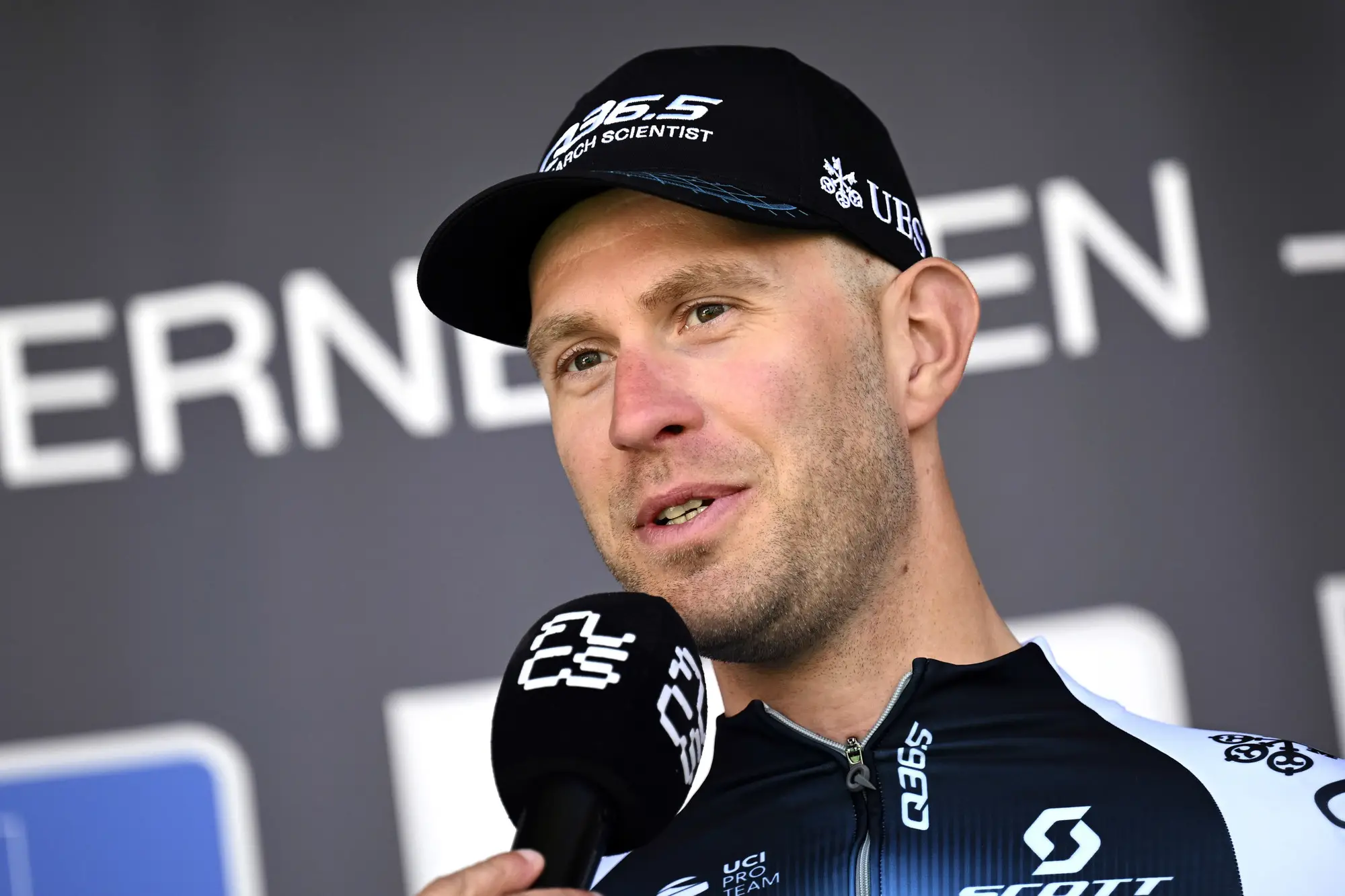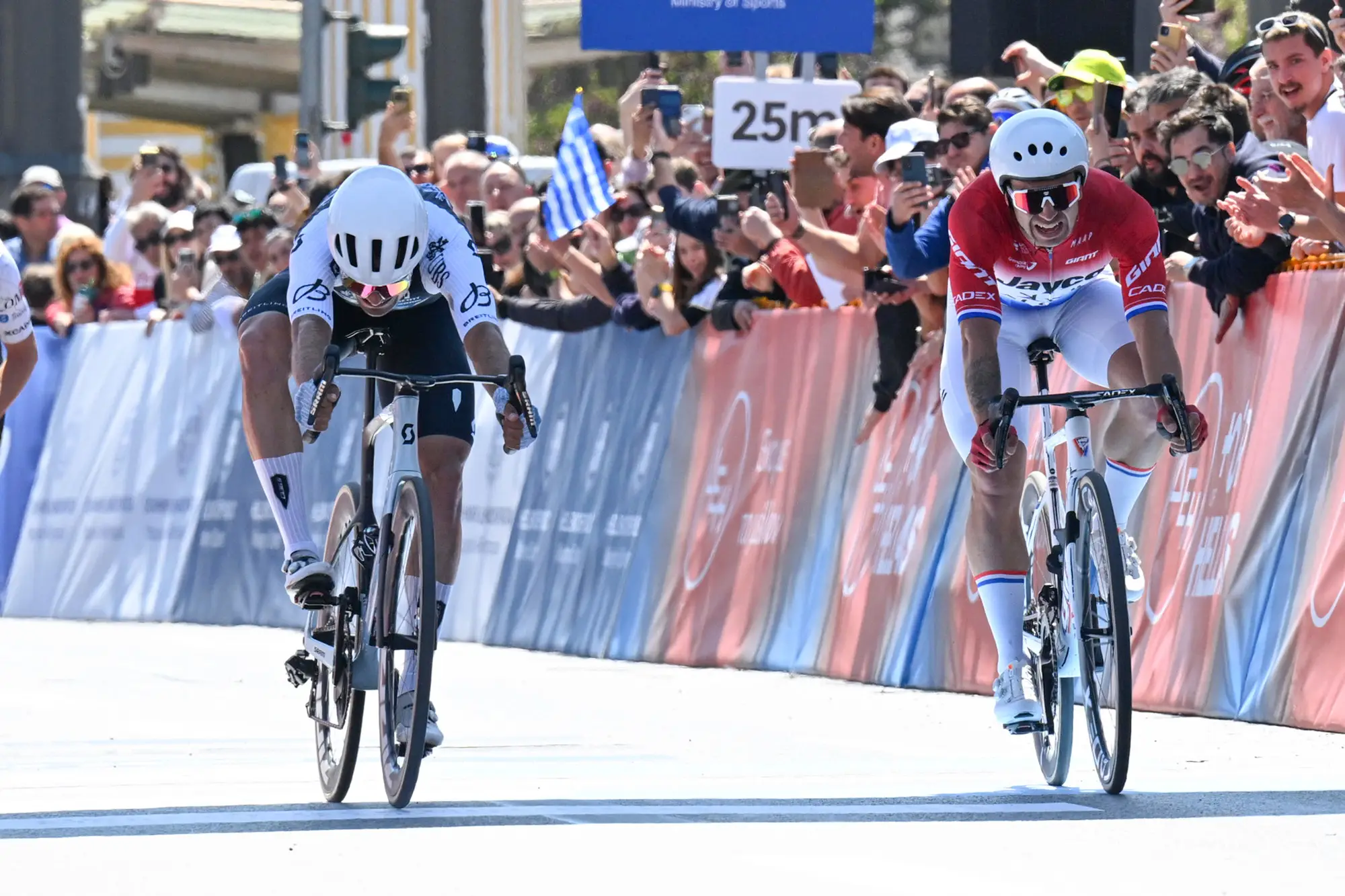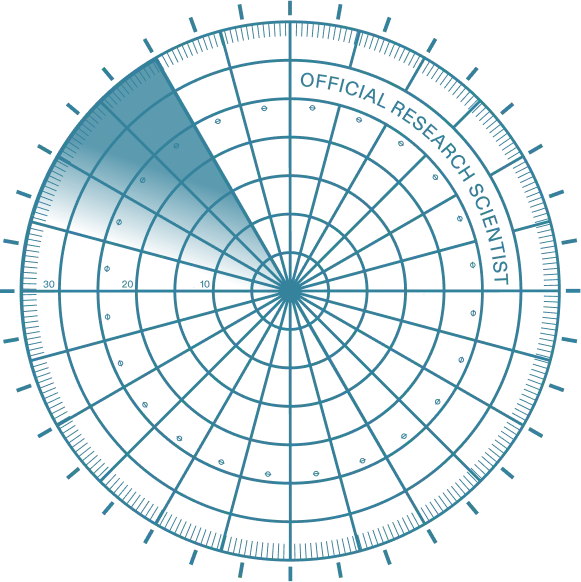Featured Story
Load up for Milan-Sanremo – Fuelling for Cycling’s Longest Race
At almost 300 kilometres, Milan-Sanremo is the longest one-day race on the calendar. To get through this monumental day where cold temperatures and rain characterized the first hours and still have enough energy for the Capi, Cipressa and Poggio in the final, you need to eat a lot. We hear from team nutritionist Adam Pluciński how he plans for Milan-Sanremo where the average rider burns around 8,000 calories on race day.
28 March 2025
Adam Pluciński grew up cycling in Poland. During his bachelor at the University of Nysa and a master’s degree at the University of Łódź he hung up his wheels to focus full time on sports nutrition. He worked part time as a soigneur and parttime as a nutritionist but since 2021 he focuses full time on nutrition. He holds an IOC diploma in Sports Nutrition.
“We see that science plays an ever more important role in cycling,” Adam says. “But it’s only in the last five or six years there is a big focus on nutrition in endurance sports like cycling. The science was already there, and I am happy to say cycling is a frontrunner in implementing all the science around this subject.”
Adam is 33 years old and joined Q36.5 Pro Cycling Team in 2024. Together with fellow nutritionist Mateusz Gawełczyk he is responsible for the fuelling strategy of our riders in important races like Milan-Sanremo but also during training days. Our partners Amacx and Hexis are vital in their day-to-day job. Planning for Milan-Sanremo already started back in December 2024.
“When I first met with the team again in December it was clear that Milan-Sanremo was a major goal for Tom Pidcock. We used that training camp to take the first measurements and made the first calculations with all our riders back then. That’s where it starts,” Adam explains.
“Think about measuring resting metabolism of the riders, but also fluid loss tests. Every rider is different in weight and muscle mass or how fast the mitochondria, the little energy factories in every cell, work. Another thing is that there are also changes in metabolism throughout the season. For example, your metabolism is more efficient when you are in shape. We take the most exact measurements in all sorts of situations to calculate food and fluids intake during races like Milan-Sanremo. Because the riders note their food intake and training effort in Hexis daily, we know exactly how to plan a fuelling strategy.”
“Because the riders note their food intake and training effort in Hexis daily, we know exactly how to plan a fuelling strategy.”
Cycling is an outdoor sport. When it’s cold or wet your body needs energy to stay warm while when it’s hot and dry, your body works hard to keep its core at the right temperature. Fuelling depends on those weather conditions, so Adam waited until the last day before Milan-Sanremo to finalize the plan which he then shares with the riders and soigneurs.
“The day before you have to focus on glycogen, or carbs loading as its popularly referred to. You would think dinner the night before is the most important meal, but breakfast and lunch are even more so. The way the body handles so much food intake differs per rider so sometimes multiple moments a day are better than large portions at once. I confer a lot with our chefs Peter and Eros. Red meats, or beans and whole grain products are healthy but take too long to digest and release their nutrients. Different vegetables and different proteins have a different effect on the body. Peter and Eros use their own creativity to cook delicious meals that look good because you also eat with the eyes. That’s why we always have beautiful desserts too. The riders like waffles with red berries, low fat sticky toffee pudding or bread pudding,” Adam smiles.
“As a rider you can miss a feed in the feed zone so you must always carry more than you actually need”
“There is also a big focus on hydration. I am always there at mealtimes to measure osmolarity in the riders’ saliva. I need to make sure they eat and drink enough, and quite often more than they need. Under fuelling is a big problem in our sport and I am here to prevent that,” he adds.
A race with a rather long but mellow start like Milan-Sanremo requires a different strategy than a two-hour fight for the breakaway in the Tour of Flanders or Roubaix. On average the riders bring around 6 to 8 Amacx bars or gels in their jersey pockets at the start and two bottles are placed on the bikes by the soigneurs. There are also solid snacks like rice crispies.
“As a rider you can miss a feed in the feed zone so you must always carry more than you actually need,” Adam explains. “Or it’s possible your teammate or captain misses a feed, and you need to share. We always think in scenarios and be prepared as much as possible, so our riders get enough to eat to perform. The team cars are also always stocked up on all types of bars, bottles and gels we have.”
Fuelling during the race can be solid food like rice crispies but mostly it’s gels, and via water and carbohydrate drinks in the bottles. Our partner Amacx has two lines: the blue line with 30 grams of carbs at a maltodextrine to fructose ratio of 2 to 1. In Milan-Sanremo the riders only used the Turbo line with 40 grams of carbs at a ratio of almost 1 to 1. Adam prepares a sticker to place on the stem with all the important points where to eat and drink.
During the race the riders follow Adam’s instructions meticulously. He says that it is important to always explain to the riders why you do what you do. His work is all about communication.
“We always work with evidence-based science, but I am also a communicator, explaining why it’s important what we do and why we do it. I am always at mealtimes to answer all the questions riders have but throughout the year I talk to them a lot following what they entered into Hexis. I listen, give advice but the most important job is to explain why.”
All seven riders made it to the finish line in Sanremo but Adam’s day is not over yet at the finish line. It’s just as important to make sure riders recover from their effort. Physiotherapy, cold ice baths, massage and sleep are important, but nutrition is vital to replenish what the body spent during the day. That starts seconds after the finish.
“You probably saw riders drink the red liquid after the finish?” Adam asks. “It’s the tart cherry juice that Amacx makes. It serves two important purposes: rehydrate and replenish the sugars lost. It also contains polyphenols which can reduce muscle soreness. The bus driver prepares the recovery shakes, and the riders have to take those even before they shower. After the shower there is a meal of rice, protein, fruit and vegetables. When riders go home, we prepare a meal for them to take with them because you can’t get the right food at airports or train stations.”
Adam’s work for Milan-Sanremo ends with making sure riders end up on a zero-balance level. If the power output was lower than expected, or someone abandoned earlier, he adjusts the nutrition for the following days to make sure no one gains weight, and everyone keep their immune system happy. And then? The next training session or race awaits, and more breakfasts, lunches and dinners follow. Every day of the year again.


